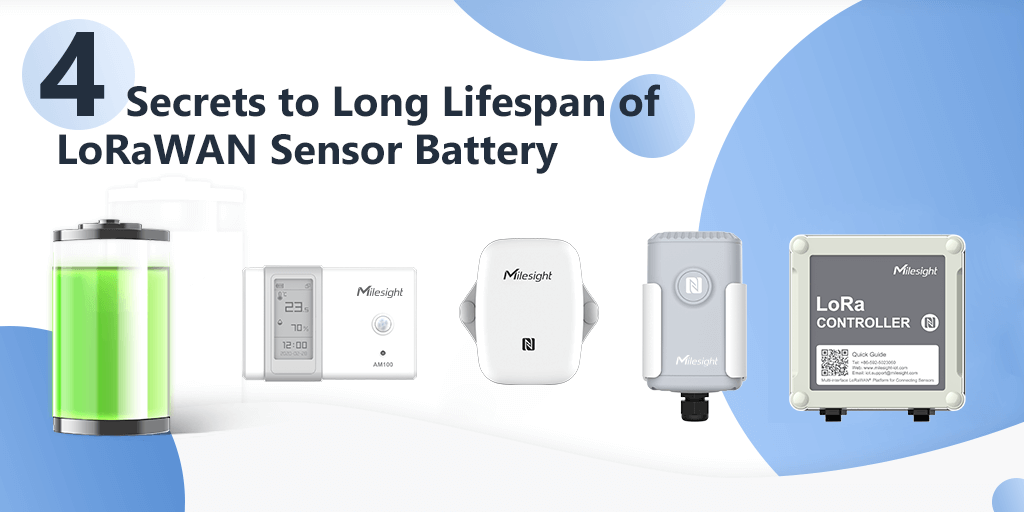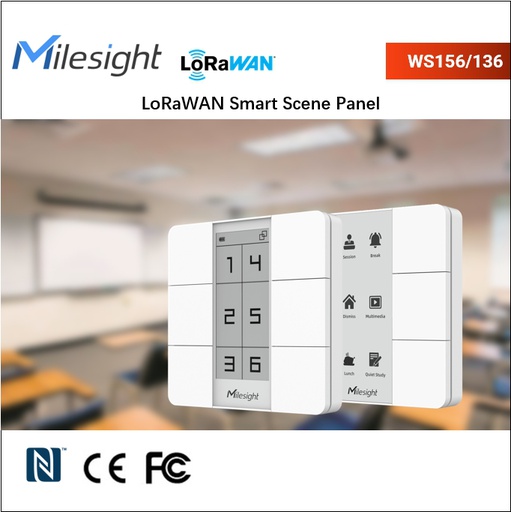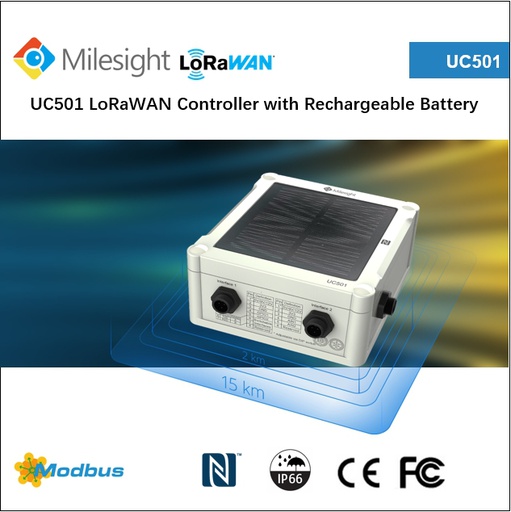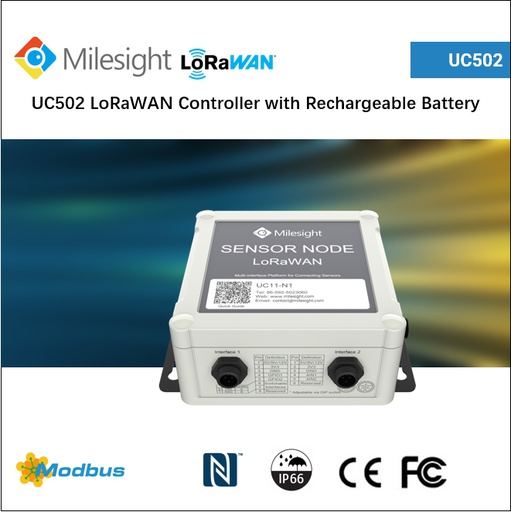Quick Fact of LoRaWAN® Sensor Battery
Most IoT sensors and sensor nodes are designed with the expected battery lifespans of 1~3 years or more. The battery use lifetime is determined by the usage of sensor nodes, let’s say, the frequency of data transmission, distance from a gateway, battery type, and sensor node type.
The Milesight AM104 series LoRaWAN® Sensors are designed with alkaline AA battery which has longer shelf life than other batteries of the chloride type electrolyte batteries. The AA battery has a much higher energy density and allows the sensor to proceed with more tasks while deploying in indoor ambience. On the other hand, the EM500 series LoRaWAN® Sensors and UC11-N1 Sensor Node provide Li-SOCL2 battery which has up to 3 years operating life depending on applications.
To ensure the optimal performance of LoRaWAN® Sensors, LoRaWAN® Sensor Nodes, and batteries, we should place our emphasis on:
4 Secrets to Long Lifespan of Battery
In our daily life, the benefits of NFC technology has long been proved in many scenarios, for example, NFC technology makes instant payment via smartphones and tablets easy. Also, the adoption of NFC technology can enhance the user experience in industrial applications that transmit data via LoRaWAN® protocol. The enhancements can be in the following areas:
Frequency of Data Transmissions
Statistically, the normal battery lifetime of an UC11-N1 is about 3 years at 20-minute regular report interval. The more frequent the data transmits, the shorter the battery lifespan will have. If you want to preserve the battery lifespans of your LoRaWAN® sensor and sensor node, set the regular reporting interval as high as your specific application will allow.
Sensor/Sensor Node Type
Most batteries of LoRaWAN® sensor and sensor node come in same shapes and sizes, but will not be used in the same manner. For example, the UC11-N1 can offer power supply to the end node and operates as PoE device. Normally, the battery lifetime will remain the same in these sensor node types.
Temperature Conditions
The changing temperature will have a severe impact on battery lifespans. As the temperature increases, the chemical reaction becomes faster and more current is produced but the life of the battery shortens. To maximize the performance and extend the battery life of your LoRaWAN® Sensors and Sensor Nodes, please maintain the temperature as close to 15℃- 21℃(°60 F – °70 F) as possible.
Radio Interference and Transmission Retries
A radio transmission is a combination of data transmission and a successful response(ACK) from LoRaWAN® Gateway. The significant amount of radio interference may have caused much difficulty in data transmission and listening and results in a longer data transmission. If the LoRaWAN® Gateway fails to receive and acknowledge data, the LoRaWAN® Sensors or Sensor Node will retry until they receive a successful ACK from it. This process will drive negative influence to battery life. To better protect your LoRaWAN® Sensors, Sensor Nodes, and batteries, try to use channels that have little radio interference from other devices.
Hint: Remember to enable “Confirmed Mode” in Toolbox.
FAQ
Q: When does the UC11-N1 send out the battery packet?
1. UC11-T1 (LoRaWAN® Temperature & Humidity Sensor): After the device has successfully accessed the Internet, the UC11-T1 will report the battery packet every time when it loses 1% of the battery power.
2.UC11-N1 (LoRaWAN® Sensor Node): After the device has successfully accessed the Internet, UC11-N1 will send out the battery packet every 12 hours.
3.UC11-N1-DC(LoRaWAN® Sensor Node – battery-powered): After the device has successfully accessed the Internet, the UC11-N1-DC will send out a battery packet every 6 hours.
Q: Will the LoRaWAN® Sensors or Sensor Nodes notify me when the battery needs to be replaced?
A: The battery status will be displayed on the Milesight Cloud. When you enable “Low Battery Alarm” and the battery power is less than 20%, the system will automatically send out an alert by email, or notification by phone.


![[EM310-TILT-915M] LoRaWAN Tilt Sensor with 3 axis accelerometer](/web/image/product.template/279986/image_512/%5BEM310-TILT-915M%5D%20LoRaWAN%20Tilt%20Sensor%20with%203%20axis%20accelerometer?unique=539c3a4)


![[VS121-915M PN:white] VS121 LoRaWAN AI Vision People Counting](/web/image/product.template/49114/image_512/%5BVS121-915M%20PN:white%5D%20VS121%20LoRaWAN%20AI%20Vision%20People%20Counting?unique=5134070)